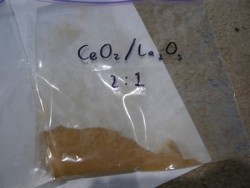
[Edited on 9-4-2014 by deltaH]




| Quote: |
Quote: Originally posted by deltaH  |
Quote: Originally posted by blogfast25  |
| Quote: |

| Quote: |

Quote: Originally posted by Zyklonb  |
| Quote: |
Quote: Originally posted by deltaH  |

Quote: Originally posted by deltaH  |
Quote: Originally posted by eidolonicaurum  |
Quote: Originally posted by Dan Vizine  |
Quote: Originally posted by eidolonicaurum  |
Quote: Originally posted by blogfast25  |
Quote: Originally posted by Bert  |
Quote: Originally posted by eidolonicaurum  |
Quote: Originally posted by eidolonicaurum  |
Quote: Originally posted by Dan Vizine  |
Quote: Originally posted by blogfast25  |
Quote: Originally posted by blogfast25  |
Quote: Originally posted by Brain&Force  |
Quote: Originally posted by elementcollector1  |
Quote: Originally posted by elementcollector1  |
 <sub>2</sub> which is relatively soluble.
<sub>2</sub> which is relatively soluble.Quote: Originally posted by blogfast25  |
Quote: Originally posted by blogfast25  |
Quote: Originally posted by 12AX7  |
Quote: Originally posted by Dan Vizine  |
Quote: Originally posted by Brain&Force  |
Quote: Originally posted by blogfast25  |
| Quote: |



Quote: Originally posted by elementcollector1  |
Quote: Originally posted by blogfast25  |
Quote: Originally posted by elementcollector1  |
Quote: Originally posted by Subcomputer  |
Quote: Originally posted by blogfast25  |
Quote: Originally posted by elementcollector1  |
Quote: Originally posted by blogfast25  |
Quote: Originally posted by elementcollector1  |
Quote: Originally posted by elementcollector1  |
Quote: Originally posted by elementcollector1  |
Quote: Originally posted by elementcollector1  |
Quote: Originally posted by elementcollector1  |
Quote: Originally posted by Dan Vizine  |
Quote: Originally posted by Brain&Force  |
Quote: Originally posted by blogfast25  |
Quote: Originally posted by elementcollector1  |
Quote: Originally posted by Dan Vizine  |
Quote: Originally posted by Chemosynthesis  |
Quote: Originally posted by Dan Vizine  |
Quote: Originally posted by Brain&Force  |
Quote: Originally posted by Töilet Plünger  |